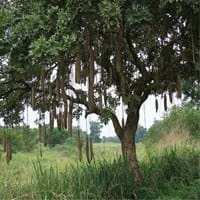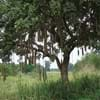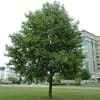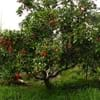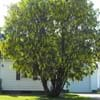Life Span
Perennial
Annual and Perennial
Type
Tree
Bulb or Corm or Tuber
Origin
Eastern Africa, Middle Africa
Central America, South America
Types
Not Available
Vine, Flowering plant
Number of Varieties
Not Available
Habitat
Riverine forest, wooded grassland
All sorts of environments, Along Railroads, Banks, Moist Ditches, Roadsides, rocky banks of streams
USDA Hardiness Zone
9-12
10-13
Sunset Zone
H1, H2, 12, 13, 19, 20, 21, 22, 23, 24
21,22
Habit
Arching/Fountain-shaped
Vining/Climbing
Minimum Width
Not Available
Flower Color
Dark Red, Tan
Purple, Rose
Flower Color Modifier
Bicolor
Bicolor
Fruit Color
Tan
Not Available
Leaf Color in Spring
Green, Dark Green
Purple, Dark Green, Black
Leaf Color in Summer
Green, Dark Green
Light Green
Leaf Color in Fall
Green, Dark Green
Several shades of Green
Leaf Color in Winter
Not Available
Light Green
Leaf Shape
Pinnate
Acicular
Plant Season
Spring, Summer, Fall, Winter
Spring, Summer, Fall, Winter
Sunlight
Full Sun
Full Sun, Partial Sun
Growth Rate
Medium
Very Fast
Type of Soil
Loam, Sand
Clay, Loam, Sand
The pH of Soil
Acidic, Neutral, Alkaline
Acidic, Neutral, Alkaline
Soil Drainage
Average
Well drained
Bloom Time
Indeterminate
Late Spring, Early Summer, Summer, Late Summer, Early Fall, Fall, Late Fall
Tolerances
Drought, Salt
Drought
Where to Plant?
Ground
Container, Ground
How to Plant?
Seedlings
Cuttings, Leaf Cutting, Tuber propagation
Plant Maintenance
Medium
Medium
Watering Requirements
Needs a lot of water initially
Keep the Soil well drained, Needs very little water
In Summer
Lots of watering
Lots of watering
In Spring
Moderate
Moderate
In Winter
Average Water
Average Water
Soil pH
Acidic, Neutral, Alkaline
Acidic, Neutral, Alkaline
Soil Type
Loam, Sand
Clay, Loam, Sand
Soil Drainage Capacity
Average
Well drained
Sun Exposure
Full Sun
Full Sun, Partial Sun
Pruning
Remove damaged leaves, Remove dead branches, Remove dead leaves
Remove damaged leaves, Remove dead branches, Remove dead leaves
Fertilizers
Balanced liquid fertilizer monthly
All-Purpose Liquid Fertilizer
Pests and Diseases
Leaf spot, Mealybugs, Rust
Red blotch
Plant Tolerance
Drought
Drought
Flower Petal Number
Single
Single
Foliage Texture
Coarse
Coarse
Foliage Sheen
Glossy
Matte
Attracts
Bees, Birds, Butterflies, Not Available
Aphids, Beetles, Cutworms, Insects, Mites, Whiteflies
Allergy
Poisonous when unripe
Abdominal pain, allergic reaction, Nausea, Skin rash, Twitching of face
Aesthetic Uses
Not Used For Aesthetic Purpose
Not Used For Aesthetic Purpose
Beauty Benefits
Acne, Slow downs aging
Not Available
Environmental Uses
Air purification
Air purification
Medicinal Uses
Gynaecological, Malaria, STDs
Cures constipation, Fiber, Low calories, lowering blood pressure, Potassium, ß-carotene, Vitamin A, Vitamin C
Part of Plant Used
Dried seeds, Leaves
Leaves, Root, Shoots, Stem, Tuber
Other Uses
Used to flavour beer, Used to produce a red dye
Starch, Used As Food, Used as Ornamental plant
Used As Indoor Plant
No
Sometimes
Used As Outdoor Plant
Yes
Yes
Garden Design
Feature Plant, Shade Trees, Tropical
Container, Edible, Groundcover, Hanging Basket, Herb / Vegetable, Mixed Border, Rock Garden / Wall, Vine
Botanical Name
KIGELIA africana
IPOMOEA batatas 'Blackie'
Common Name
Sausage Tree
Blackie Sweet Potato Vine, Sweet Potato Vine
In Hindi
Sausage Tree
शकरकन्द
In German
Sausage Tree
Süßkartoffel
In French
saucisse Arbre
Patate douce
In Spanish
Árbol de salchicha
Ipomoea batatas
In Greek
λουκάνικο δέντρο
Sweet potato
In Portuguese
Árvore de salsicha
Batata-doce
In Polish
kiełbasa Drzewo
Wilec ziemniaczany
In Latin
farciminis ligno
Ipomoea batatas
Phylum
Magnoliophyta
Tracheophyta
Class
Magnoliopsida
Magnoliopsida
Family
Bignoniaceae
Convolvulaceae
Clade
Angiosperms, Asterids, Eudicots
Angiosperms, Asterids, Eudicots
Tribe
Tecomeae
Not Available
Subfamily
Not Available
Not Available
Number of Species
Not Available
Not Available
Season and Care of Sausage Tree and Sweet Potato Vine
Season and care of Sausage Tree and Sweet Potato Vine is important to know. While considering everything about Sausage Tree and Sweet Potato Vine Care, growing season is an essential factor. Sausage Tree season is Spring, Summer, Fall and Winter and Sweet Potato Vine season is Spring, Summer, Fall and Winter. The type of soil for Sausage Tree is Loam, Sand and for Sweet Potato Vine is Clay, Loam, Sand while the PH of soil for Sausage Tree is Acidic, Neutral, Alkaline and for Sweet Potato Vine is Acidic, Neutral, Alkaline.
Sausage Tree and Sweet Potato Vine Physical Information
Sausage Tree and Sweet Potato Vine physical information is very important for comparison. Sausage Tree height is 1,220.00 cm and width 910.00 cm whereas Sweet Potato Vine height is 15.00 cm and width Not Available. The color specification of Sausage Tree and Sweet Potato Vine are as follows:
Sausage Tree flower color: Dark Red and Tan
Sausage Tree leaf color: Green and Dark Green
Sweet Potato Vine flower color: Purple and Rose
- Sweet Potato Vine leaf color: Purple, Dark Green and Black
Care of Sausage Tree and Sweet Potato Vine
Care of Sausage Tree and Sweet Potato Vine include pruning, fertilizers, watering etc. Sausage Tree pruning is done Remove damaged leaves, Remove dead branches and Remove dead leaves and Sweet Potato Vine pruning is done Remove damaged leaves, Remove dead branches and Remove dead leaves. In summer Sausage Tree needs Lots of watering and in winter, it needs Average Water. Whereas, in summer Sweet Potato Vine needs Lots of watering and in winter, it needs Average Water.
